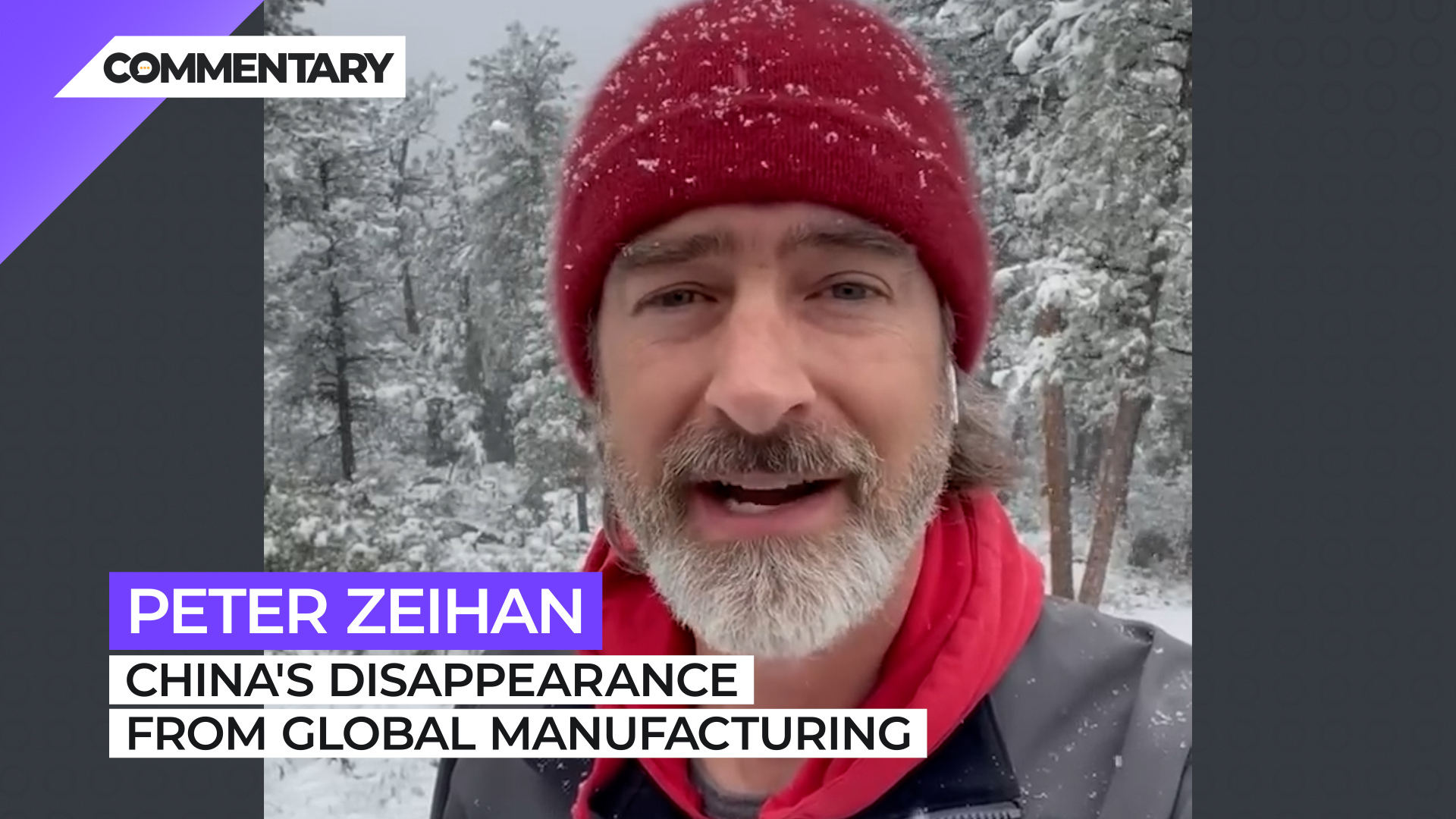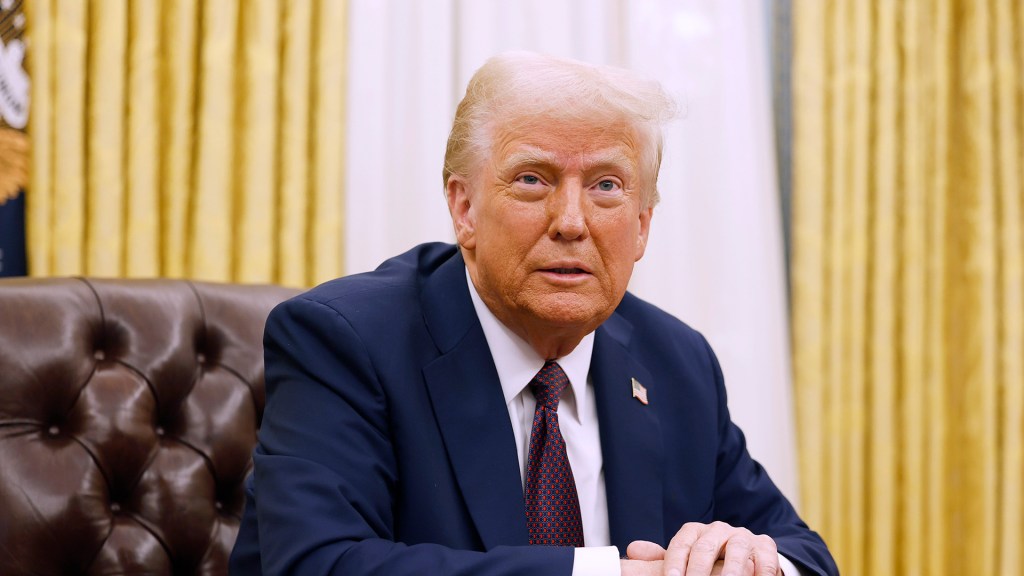
Commentary
-
Our commentary partners will help you reach your own conclusions on complex topics.
Hey everyone, Peter Zeihan here coming to you from Colorado, where it was 74 degrees yesterday, and today we are getting a foot of snow. Today we’re gonna talk about the disappearance of China from global manufacturing.
At issue, is that the Chinese of recently, this week, the last four days, began mass testing for coronavirus in the port city of Tianjin. Tianjin is the single largest port in Northern China; Northern China being where roughly two thirds of the Chinese live. It is a import-export port that focuses on the, on the importing of bulk commodities, such as food stuffs, oil ores, that sort of thing.
Northern China’s a little bit different from Southern China. The Southern China city states, in effect, are all export entrepots and hubs, whereas in Northern China, because more people live there, a lot of the manufacturing is for domestic consumption so they have to bring in raw materials from elsewhere. That doesn’t make Tianjin more or less important than other places, say Shanghai or Guangzhou. It just makes it a different kind of important.
Now what’s going on is that the Chinese are testing food supplies specifically. And that’s how you know that they’re getting ready to lay some blame because there’s no country in the world that thinks you can import COVID on say frozen meat, except for the Chinese. There can be infections on the packaging. That’s certainly true, but we know after two years of COVID that the only way that you might then be able to get COVID is if you shred the materials and then snort them. You can’t get COVID from a surface, but this is what they’re preparing for.
And anytime you do mass testing, like they’re doing in Tianjin now you are going to find cases of Omicron because it is the most infectious disease we have ever dealt with.
Now, if Tianjin goes into lockdown, as seems increasingly likely, that will mean that Tianjin and Beijing are in lockdown in the north, Shanghai in the center, and Guangzhou in the south. And that also means that the three biggest transport and manufacturing hubs in the country, again, Tianjin, Guangzhou and Shanghai, would all be in lockdown of some degree all at the same time.
So we are looking at the majority of Chinese manufacturing for all intents and purposes, being inaccessible to the wider world, or even to the internal Chinese system.
Now I’ve been telling my clients for quite some time that it was only a matter of issue as to how the American Chinese relationship imploded. Could be Trump, could be Biden, could be energy, could be food, could be security, could be trade, could be ethics, could be genocide.
You know, there, it’s a long list, but it appears that COVID ultimately is the one that is winning out.
The Chinese vaccine does not work against COVID. And the Chinese have spent the last two years lambasting the world and lying in the propaganda that they are the only country that has even remotely dealt well with COVID, and they’ve specifically parroted a lot of the crazy theories out there about the Western vaccines that they make you magnetic, or they make you infertile, or whatever else. So they can’t import the Western vaccines at all. They have to wait till they make their own MRNA formula, and there’s no way that’s gonna happen in the next year or two. So lockdowns are the only public health policy they have.
And now the majority of the parts of China that matter are offline. If you’re stuck in manufacturing in China, this is the beginning of the end if it’s not the end already, because as soon as you have an opening, Omicron comes back in, and then you get a closing again, because that is the only tool that the Chinese Communist Party has left. So the question is what’s next? There is a limited option for relocating manufacturing supply chains from China to other parts of the world, most notably North America.
We are experiencing a labor shortage in the United States that will not be let up for at least 20 years. We just know that the Zoomer generation is a relatively small one. They’ve all been born already. They’re feeding into the labor market now, and we know exactly how big our shortage of labor is going to be until the 2040s.
Mexico also is capable of helping, but only to a limited degree because they had a baby bust back in 1995. And their birth rate has been declining ever since. That’s long ago, that is starting to affect their labor markets.
So first mover advantage means a lot, and companies that have decided to ignore the writing on the wall for the last four or five years and just assume that everything was going to go back to how it was before Donald Trump are now being violently disabused of those notions. And they are the late people to the party. And they’re the last ones in line for getting labor to relocate things from China.
All right. That’s everything from me. If you found this interesting, two things, number one, please make a donation to the AFYA foundation, A F Y A foundation.org. They’re providing medical assistance to the people who are in the Ukraine, seeking, or I’m sorry, the, the refugees that are escaping from Ukraine, that’s the group that they’re helping. And then second, if you wanna hear more on this in the future of inflation, we do have a new seminar that we will be doing on June 8th. You can sign up for that at the link below, right next to the AFYA foundation link. All right, that’s it for me? Bye.
Webinar Sign-Up: Inflation: Navigating the New Normal
AFYA Foundation: Amazon Wishlist
-
Hurricane Helene hits US coast, Appalachia and beyond
Hurricane Helene hit Florida and Georgia overnight between Sept. 26 and 27 as a Category 4 hurricane, and accompanying storms will continue reaching deeper into the continental United States today. Dangerous flash flooding from the hurricane, known as storm surge, was some of the worst flooding that the Tampa Bay area has ever seen, and… -
Israel holds upper hand against Lebanon, Hezbollah and Iran
On Wednesday, Sept. 25, Hezbollah launched a ballistic missile at Tel Aviv in retaliation for Israel’s explosive pager attack that blew up devices across Lebanon. Although Israel’s defense systems intercepted the surface-to-surface missile, the attempted strike on Tel Aviv marked a significant escalation by Hezbollah. Since the siege on Gaza began, shortly after the Oct. 7, 2023,… -
The Sinaloa Cartel civil war
Fears of a civil war within the Sinaloa Cartel are growing as violence between competing factions within the cartel continues. The Mexican Army has dispatched around 600 elite troops to Sinaloa to help quell those fears, in addition to roughly 2,200 regular soldiers and National Guard. Watch the above video as Straight Arrow News contributor… -
New Ukrainian weapons hit Russia where it hurts
Ukrainian drones struck a major Russian ammunition depot, triggering a massive explosion that was captured on camera. According to the Ukrainian military, 2,000 tons of munitions had arrived at the depot before the attack. Over the past two years, Ukraine has significantly increased its domestic drone production, allowing it to scale up attacks on military… -
Weighing social costs vs. economic benefits on immigration
Global human migration is one of the defining elements of our current historical era, according to the United Nations. Migrants face both the incentives to leave — forced out by climate change, crime and corruption, extreme poverty or violence — and incentives for where to go, based on available job opportunities and so on. Migration…
Latest Stories
-
 Getty Images
Getty Images
Gene Hackman’s dead dog misidentified as details continue unfolding
-
 Getty Images
Getty Images
Sexual violence used as war tactic against Sudanese children: UNICEF
-
 Getty Images
Getty Images
Trump praises BlackRock for $19 billion Panama Canal investment
-
 Getty Images
Getty Images
President Trump announces arrest of Kabul airport bombing suspect
-
 Getty Images
Getty Images
Supreme Court requires Trump admin to pay $2B in frozen foreign aid
Popular Opinions
-
In addition to the facts, we believe it’s vital to hear perspectives from all sides of the political spectrum.
Latest Opinions
In addition to the facts, we believe it’s vital to hear perspectives from all sides of the political spectrum. We hope these different voices will help you reach your own conclusions.
The opinions published in this section are solely those of the contributors and do not reflect the views of Straight Arrow News.





















Latest Commentary
We know it is important to hear from a diverse range of observers on the complex topics we face and believe our commentary partners will help you reach your own conclusions.
The commentaries published in this section are solely those of the contributors and do not reflect the views of Straight Arrow News.
Dr. Frank Luntz
Pollster and Political Analyst‘Biased’: What Americans think of ‘mainstream media’
‘Getting rid of them’: Americans discuss Trump and immigration
‘Woke’: Why some Biden 2020 voters backed Trump in 2024